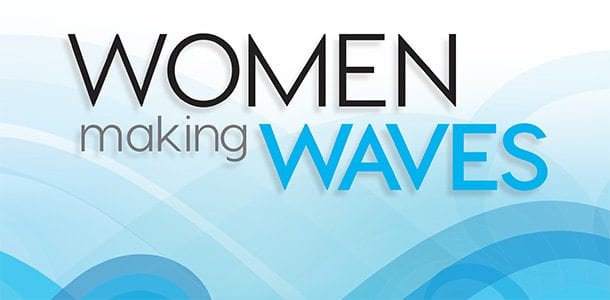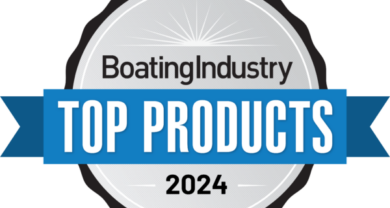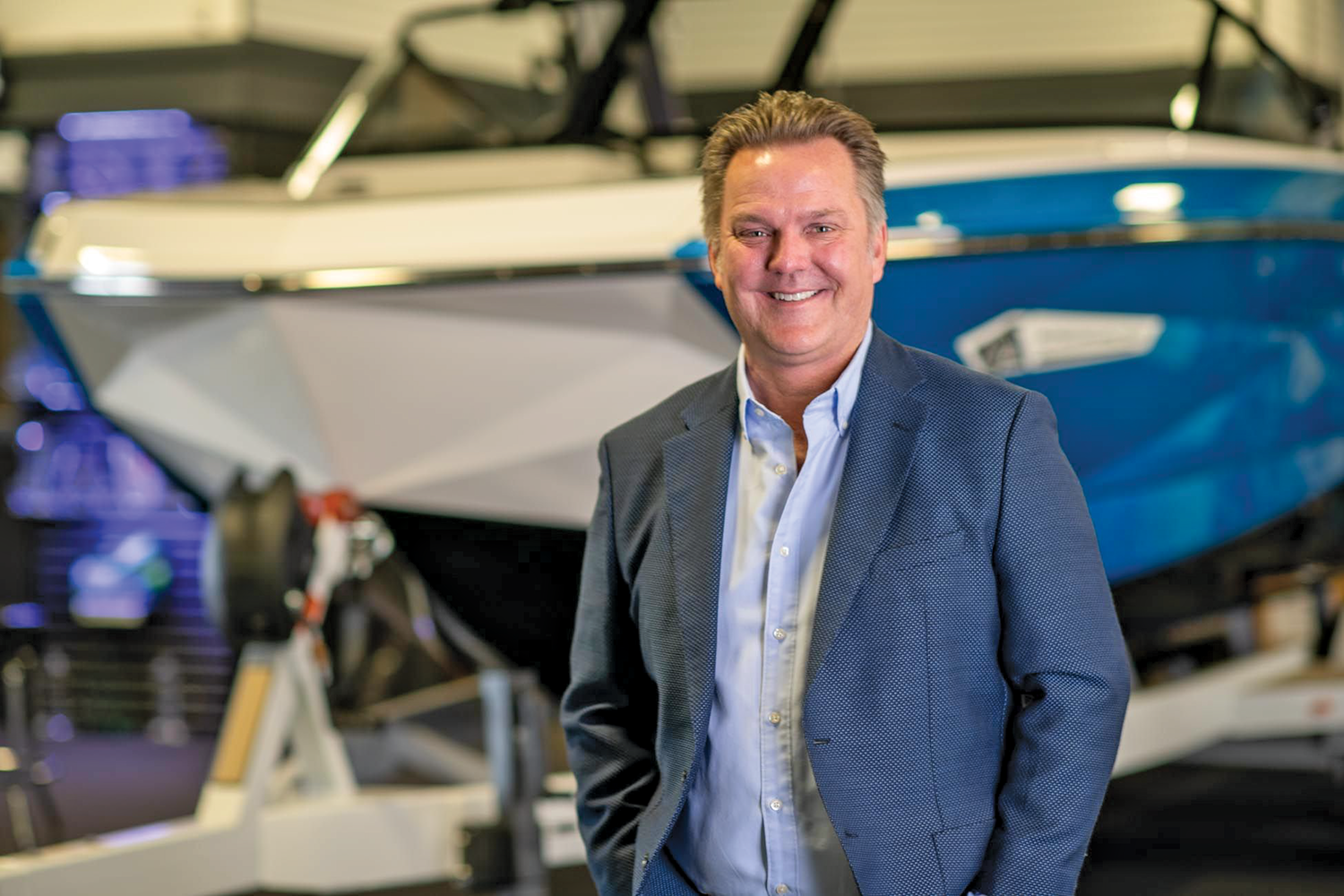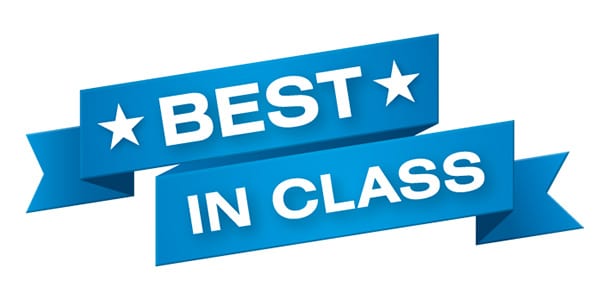Best Practices
Boating Industry magazine highlights the best practices found in a sampling of the strategies and initiatives measured in the Top 100. By “best practice,” we don’t necessarily mean that one company’s program is better than all others in a direct competitive sense.
Instead, the dealers highlighted here represent a collection of those programs deemed the most innovative or successful. These programs exhibit the rewards that creative thinking and thorough execution can bear when such efforts are directed at delivering the dream that is boating. They are programs worthy of emulation. Granted, one company’s best practice may not work in your dealership, since no two business models are alike — whether considering customer demographics, brands sold or corporate culture.
But perhaps by reading our list you will be able to establish creative practices of your own. Think of them as conversation starters for your management team. And when you do create your own initiatives, share them with us. Perhaps next year, your creations will become the measure for all others.
BEST PRACTICE: Skipper Bud’s
What’s the plan?
One sure sign of a winning sports team is a roster of well-prepared players. When one goes down, another takes over without the team missing a beat.
In sports, it’s called depth. In business, it’s called succession planning.
At Skipper Bud’s, based in Winthrop Harbor, Ill., (ranked 2, see Top 5 Profile, page 60), planning is part of the institutional culture of the company.
Many businesses have legal arrangements in place with regards to ownership transfer, and Skipper Bud’s is no different. Personal estate plans, stock transfer arrangements and buy/sell agreements have been created and will work to ensure an orderly exchange of control when the time comes.
But Skipper Bud’s succession planning extends much deeper than ownership. As Dennis Ellerbrock, company president, explains, “far more important to our customers, financial resources and suppliers is the effective transfer of management over time … our legal, financial and, above all else, our operations departments have active and ongoing succession plans in place.”
Like any good sports team, Skipper Bud’s uses depth-chart planning, which the company says is prevalent throughout the organization at all levels.
Ellerbrock profiles seven of the company’s corporate officers and directors in its Top 100 application and says each has a backup who is well into his or her training to assume that person’s duties if, or when, the time comes.
To illustrate this, Ellerbrock cites Ron Thiesen, who he says is “an excellent example of how our succession is working.” Thiesen is Skipper Bud’s vice president of finance and risk management and is now working part time as he moves toward retirement. With that in mind, Tony Donarski, the company’s vice president of accounting, is gradually taking over many of Thiesen’s duties so that the transition is as seamless as possible.
But whether the transition is gradual or abrupt, having a plan in place, or, like Skipper Bud’s, a specific person chosen and trained, makes the process as painless as possible. — Jonathan Mohr
BEST PRACTICE: MarineMax
The training way
“The MarineMax Way” isn’t something that came about by accident. And it’s not a mentality that just hangs around in hopes of being passed on from one employee to the next.
No, to instill a culture of being the best, there are processes and procedures that must be put in place to achieve a competitive advantage. For MarineMax (based in Clearwater, Fla., and ranked 1, see Top 5 Profile, page 58), that mentality is focused squarely on training its people.
Training, in this sense, doesn’t conclude after the first week of employment, either. And it doesn’t end with once-a-year technician training opportunities. This training, found in the only online continual development program in the Top 100, encompasses the entire culture of MarineMax, and in fact, has become a foundation in the development of its 1,600 employees.
With the access Boating Industry was granted to MarineMax University Online, we “sat in” on a Leadership and Management course instructed by VP Team Development Jay Avelino. This video course, accompanied by a PowerPoint program that recapped the video’s highlights, went into great detail about the company’s use of the topgrading concept, creating development plans — or “personal action plans so [each] individual can continue to grow, develop and achieve individual and company goals” — and of course, what to do when disciplinary action is needed for employees.
While this course underscores the company’s focus on training and personal development, it focuses its teachings on a management audience. Throughout the online university, however, there are more than 130 training modules that employees can tap into, including such subjects as Safety and Environmental Compliance, Parts Department Processes, Telephone Skills, Sales Excellence — The MarineMax Way, Service Management, and Human Resources. And there are as many as 42 individual tests under these “section” headers.
Each course is available to employees in a CD-ROM video, streaming video, streaming audio, is accompanied by the lecture PowerPoints, and of course, the requisite quiz.
And it’s through taking and passing such training courses as “finding and retaining top performers,” and “coaching to improve performance,” that the MarineMax Way moves from a concept to a reality. — Matt Gruhn
BEST PRACTICE: Surfside 3 Marina
Chasing perfection
Two years ago, Surfside 3 Marina, based in Lindenhurst, N.Y., (ranked 3; see Top 5 Profile, page 62) made a decision that transformed its business.
It created a new position with one main responsibility — to listen.
“I was hired to be the eyes, ears and voice of the customer,” explains Janice Mottern, CSI expert. “They asked me to look at every department and see where the customer’s voice wasn’t being heard.”
To ensure customer’s complaints weren’t falling through the cracks, for example, Mottern created a computerized log into which all customer communications are entered. Service writers are required to check the log daily and respond to customers.
In addition, she standardized customer follow-up after a sales or service experience, from postcards and phone calls to e-mails. And check sheets have been created for processes like boat delivery to ensure consistency.
Part customer psychiatrist, part inter-departmental liaison, Mottern is behind Surfside 3’s transformation from a customer satisfaction nightmare to a CSI dream. This, in turn, has driven jumps in sales and profitability for the Top 100 dealer.
In the first quarter of 2003, service satisfaction was a dismal 2.6 out of 5 and sales satisfaction, 3.19 out of 5. As of the end of October, customer satisfaction with service had climbed to 9.54 out of 10 and sales was rated a 9.53.
With 12 locations in the New York metropolitan area and over 1,000 boat buyers per year, that’s a significant accomplishment. What it boils down to, according to Mottern, is communication — both between departments within the company and between the company and its customers.
When a customer has a problem, departments tend to blame each other. As an objective party, she listens to both sides and mediates the disputes, helping everyone work together to fix customers’ concerns.
“You need to be willing to accept change and know that your way isn’t always the best way,” she explains. “It takes a little bit of everybody to run smoothly. And what works now may not work six months from now.”
Today, Mottern is aiming for a perfect score. While other dealers have hit that mark, the sheer number of customers Surfside 3 serves each year makes it difficult to imagine.
“I think it’s feasible,” she proclaims. “It’s listening to every single customer. If you can capture all the problems prior to them escalating into catastrophes, I don’t see any reason why you can’t satisfy everybody.” — Liz Walz
BEST PRACTICE: Duchow’s Boat Center
Efficiency tracking
Tracking technician efficiency doesn’t have to be a science. To monitor the productivity of their service techs, nearly every Top 100 dealer simply compared hours worked to hours billed.
That’s the norm, but a few dealers take a different approach. Duchow’s Boat Center (ranked 30) in Oconomowoc, Wis., doesn’t believe it’s accurate to track technicians’ performance based on hours worked. Efficiency is tracked in dollars instead.
Duchow’s divides labor into four categories: Internal Labor, Warranty Labor, Rigging Labor and Customer Paid Labor.
The performance of service personnel is then measured by calculating the ratio of individual payroll wages against individual labor income. The dealership’s efficiency standard in all service departments is $1.00 earned income to $0.50 in paid wages.
“The whole point of the system is not to keep track of money for money’s sake,” explains Mark Duchow, the company’s owner and president. “It’s to measure the efficiency of technicians and to raise the quality standard on the work that we’re doing.”
Both of those objectives have been accomplished. Duchow’s has garnered CSI scores of 100 from Carver and 98 from Silverton, and averages a 94 among the six brands it carries.
The dealership is so confident in the quality that this tracking method ensures that it now offers a “Service Work Done Right the First Time or It’s Free” guarantee on all of the work its service department performs.
“We weren’t going to come out and have a public policy unless we had a pretty good idea that there weren’t going to be a whole lot of comebacks,” Duchow says.
In fact, when the program began, the benefits were almost immediately apparent.
“Pretty quickly the guys understood that everybody was being monitored for all of the work that they did,” Duchow says. “Everybody sort of decided to take their jobs a little more seriously and be a little more careful and diligent about what they were doing than before.” — Jonathan Mohr




